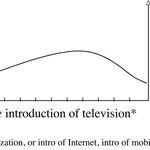Anthropology

Children are natural psychologists and by the time they reach preschool they understand that other people have desires, preferences, beliefs, and emotions too.
Exactly how they learn this isn't clear but a new study says that one way children figure out another's preferences is by using a topic you'd think they won't formally encounter until college: statistics.
In one experiment, children aged 3 and 4 saw a puppet named "Squirrel" remove five toys of the same type from a container full of toys and happily play with them. Across the children, the toys that Squirrel removed were the same…

Research presented at the annual meeting of the American Sociological Association had a surprising finding for women and careers - women who are economically dependent on a man are less likely to cheat but in men it is just the opposite. So strippers beware. Your boyfriend who is 'getting his band going' may not be faithful for long.
According to the study, which examined 18- to 28-year-old married and co-habitating respondents who were in the same relationship for more than a year, men who were completely dependent on their female partner's income were five times more likely to…

If you want to really get back to nature, it still involves meat. A team of researchers has discovered evidence that human ancestors were using stone tools and consuming the meat and marrow of large mammals 1 million years earlier than previously documented.
While working in the Afar region of Ethiopia, the Dikika Research Project (DRP) found bones bearing unambiguous evidence of stone tool use - cut marks made while carving meat off the bone and percussion marks created while breaking the bones open to extract marrow. The bones date to roughly 3.4 million years ago and provide the…

In a classic experiment known as the Ultimatum Game, person A is given 10 coins to split between himself and person B. If person B accepts the distribution, they both keep the coins; if not, no one gets paid.
According to Game Theory, the optimal solution is for person A to give himself nine coins and person B one coin——both will end the game richer than when they started. However, played in the wild, the most common distribution is 6-to-4, a ratio seen as fair by both parties.
But why? What's the origin of the human idea of fairness?
To answer that, let's take a look at a spin on the…

There have been a lot of good articles lately in the dealing with the Underground Railroad. Recently, Timbuctoo was recovered in New Jersey by Temple U. and is currently under extensive survey. It’s a great find because of what Timbuctoo was, and what it came to be. As more is released about Timbuctoo the more we’ll learn about early free black communities.
The Underground Railroad is no less significant as a moment in history. The Whites who ran the Railroad abhorred slavery, many viewed Blacks and Whites as equal long before there was ever an equal rights movement. These people…

I have a theory (not like a science theory… more like a personal theory) about patriarchies (male led cultures) – they don’t exist.
I suppose, on the face of it, many human cultures appear to be patriarchies. They operate in patriarchical ways. For instance, in over 200 years the United States has never had a woman President – or Vice President – or Chief of Staff. Who wears the pants in our family?
Well, I hate to admit I have spent more than my share of time alone, contemplating why it is so darn difficult to maintain a good relationship. Maybe it’s just me. But I will go to very great…

True or false: The cinema was invented in the late 19th century.
It's only true if you consider the cinema to be artificial projection. It turns out that the original idea behind the cinematic experience, the use of visual and audio means to tell a story, extends back to the Chalcolithic period, commonly called the Copper Age, according to the "Prehistoric Picture Project" being carried out by St. Pölten University of Applied Sciences, the University of Cambridge and the Bauhaus-Universität Weimar..Copper Age cinema buffs got one thing right long before modern man; they viewed "films"…

Meet Lucy's 'great-grandfather'. Scientists from The Cleveland Museum of Natural History, Kent State University, Case Western Reserve University, Addis Ababa University and Berkeley Geochronology Center were part of an international team that discovered and analyzed a 3.6 million-year-old partial skeleton found in Ethiopia. They say the early hominid is 400,000 years older than the famous Lucy skeleton and that their research on this new specimen indicates that advanced human-like, upright walking occurred much earlier than previously thought.
The partial skeleton belongs to…

Rather than hijack Eric Diaz' excellent recent post with lengthy and tangential comments, I'll post my thoughts about the roots of war here. Machines, Organizations&Us is a column on human-machine interactions, so after laying some anthropological and ethical groundwork I'll offer speculations on relationships between technology (and our feelings about technology) and war.
One of my aikido students asked me,
Why does war exist, and is war always bad? Do we fight because it is the right thing to do, like self-defense / prevention of harm? Or do we fight because we want something out of it…

What one wants to say what one really says and what one wants to hear and what other person really says ? With civilization covering our bodies with clothes in different parts of the world our ideas also got a covering of shyness , crookedness, wickedness depending on the level of civilization from medivel times to most modern times.
Cant we develop some machine to reach to the neurons to read what one is saying and what one is wanting to say but hiding his feeldings.
If we start reading minds of each other it will be catastrophe as most of the emotions are hidden and true feelings are…